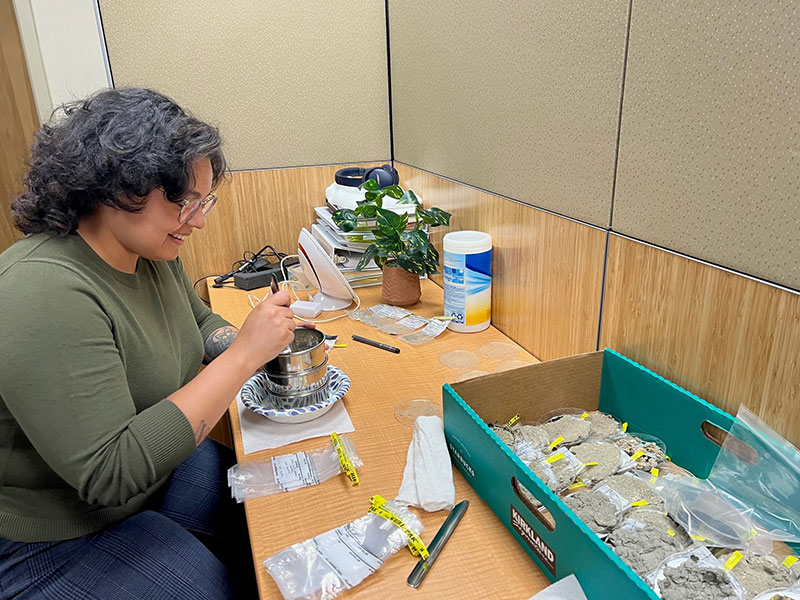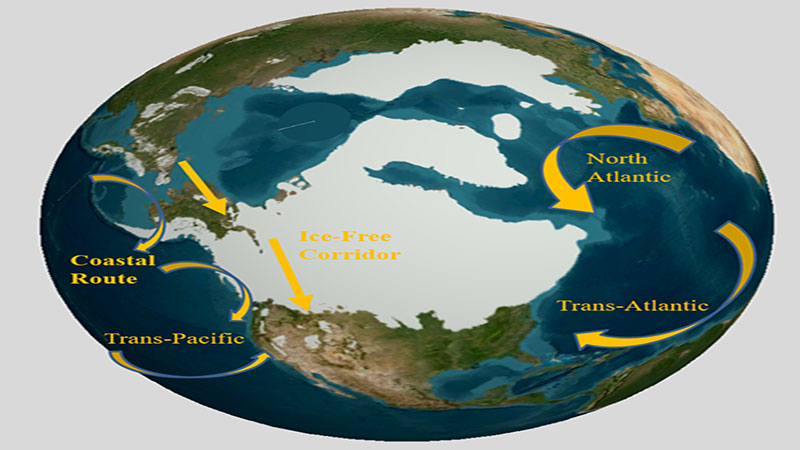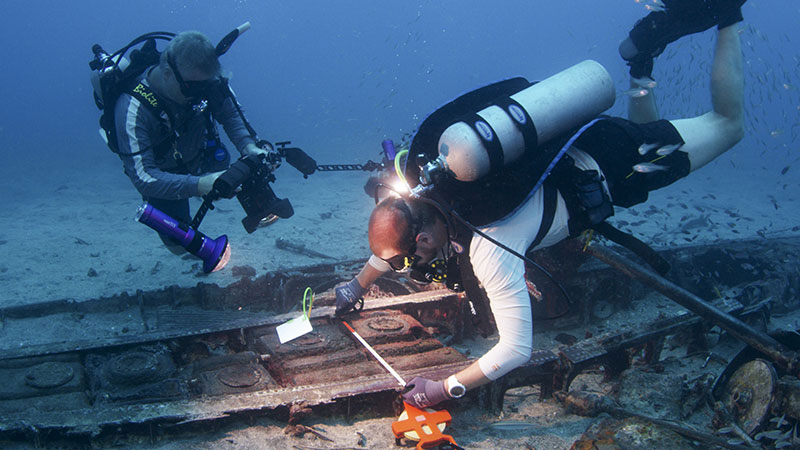What is microdebitage?
Microdebitage refers to small fragments, less than one millimeter in size, produced when stone tools are created. These fragments can help archaeologists identify areas where stone tools were made, which in turn can help to locate archaeological sites in areas that could not be excavated by traditional methods, including underwater sites.

Microdebitage images from a scanning electron microscope (SEM). Image number 3 is experimental debitage; 4 shows feathered edges and unidirectional striations; and, 5 shows thinned edges and unidirectional conchoidal fractures. Flakes from the Great Lake basin. Images from Lisa Sonnenburg's dissertation, Appendix 1. Download image (jpg, 110 KB).
During the Our Submerged Past project, the team searched for archaeological evidence of the earliest inhabitants of North America – a task that is hard at the best of times. Trying to find this evidence in the deep, chilly waters of Alaska seems like an impossible mission. Fortunately, with technologies such as remotely operated vehicles, side-scan sonars, and advanced geographic information system (GIS) models, the chances of locating these hard-to-find sites are greatly improved. However, not all methods are high tech – some just require some sediment samples, a microscope, and a lot of patience!
In the early 1980s, Knut Fladmark, an archaeologist at Simon Fraser University, noticed something important. During experimental stone tool production: huge numbers of small fragments less than 1 millimeter in size were found up to 3 meters (9.8 feet) away from where the stone tools were being created. He called these fragments 'microdebitage' and estimated that over 1 million pieces of this microdebitage were created each time a stone tool was made. Given that these small fragments were more numerous and widely distributed than a single stone tool would be, Fladmark suggested that microdebitage could be used as a means to locate archaeological sites in areas that could not be excavated by traditional methods, such as those underwater.
Microdebitage can be easily extracted either from sediment cores or grab samples. Twenty grams of collected sediment is sieved and separated into two separate size fractions of 1 to 0.5 millimeters and 0.5 to 0.25 millimeters and then treated with peroxide to remove any remaining organic material. The sediment is air-dried and one gram of dried sediment is placed into a gridded petri dish for identification under a light microscope at 80-times magnification.

Sealaska Heritage Institute museum intern, Jordan Martinez, helping screen sediments brought back for microdebitage analysis from 2023 field work conducted as part of the Our Submerged Past project. Images courtesy of Kaila Cogdill. Download image (jpg, 817 KB).
Microdebitage exhibits many of the same characteristics as their larger cousins- very thin, almost feather-like edges, conchoidal (round or scalloped shaped) fractures, and smooth surfaces (Figure 1). While it can sometimes be hard to tell the difference between naturally fractured and human-made stone fragments, the naturally occurring fragments often have pitted and striated or striped surfaces, with thicker, less finely angular edges.
Microdebitage has been used to identify and confirm 9,000-year-old submerged archaeological sites in the Great Lakes basin and now it may be used to help find sites from the earliest North Americans.
By Lisa Sonnenburg, Parks Canada
Published August 28, 2023
Last updated August 21, 2024
Relevant Expedition: Our Submerged Past: Exploring Inundated Late Pleistocene (10,600 - 17,000 years ago) Caves in Southeast Alaska with Sunfish

